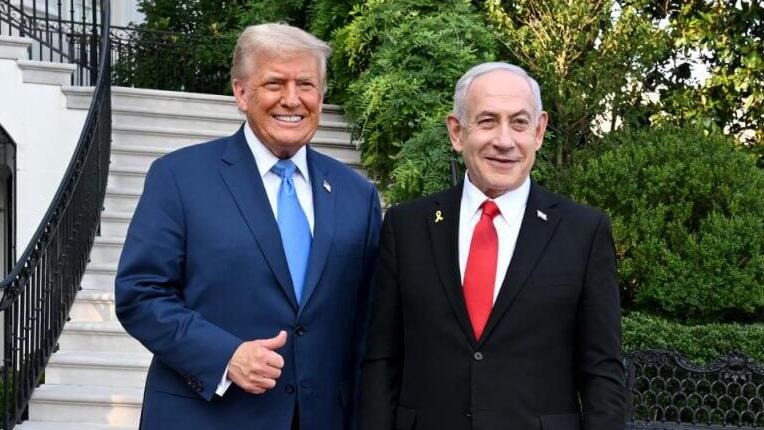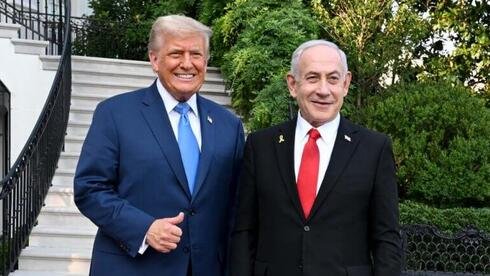3 View gallery


U.S. President Donald Trump and Prime Minister Benjami Netanyahu in state visit to Washington
(Photo: Avi Ohayun, GPO)
Consider the slogan: Israel won’t stop until Hamas disarms. If Hamas agreed to disarm tomorrow, would it happen? Who would enforce it? Only the IDF could do so by imposing full military control over Gaza.
No Emirati or Egyptian would comb Deir al-Balah’s alleys to collect every AK-47 rifle. In other words, Hamas’s agreement to disarm would likely be a ruse unless Israel fully occupies the territory, rendering any deal with Hamas moot. Why, then, does Israel demand this? The answer is left to the reader.
Another slogan insists Hamas must not govern Gaza. Hamas has signaled it would relinquish overt control, but Israel seeks to prevent its influence behind the scenes. This requires either direct IDF rule—negating the need for a Hamas agreement—or the Palestinian Authority governing Gaza as Hamas’s sworn enemy.
Netanyahu has rejected the latter, as confirmed by a senior political source early that morning, while not ruling out military occupation. He signaled to his base, particularly far-right ministers, that a military administration is on the horizon.
The reality is starkly different. Since resuming fighting after the March ceasefire, Israel has destroyed significant Hamas infrastructure and severely damaged its battalions. But the cost has been high: 38 IDF soldiers killed in Gaza since March, averaging about 10 per month. The losses have surged since June 1, showing Hamas’s ability to harm soldiers remains intact.
Counting slain terrorists is futile in a densely packed region with no economy, schools or governance, where recruiting young men to fight Israel is easy. The U.S. made a grave error in Iraq by disbanding Saddam Hussein’s army; Israel’s mistake in Gaza is larger, dismantling everything.
A new slogan proposes rebuilding Rafah as a “humanitarian city,” where Palestinians would be “screened” for terrorists to defeat Hamas. Would Israel forcibly relocate two million people to southern Gaza? How, while hostages remain in areas Israel might invade?
What would this “humanitarian city” entail, and who would fund it—Israeli taxpayers again? How would Israel ensure Hamas stays out? A fence? Conversations with the plan’s architects reveal they lack clear answers.
The meeting operated on three levels. The most significant was emotional. As Trump greeted Netanyahu, waiting by his car, their embrace conveyed a shared struggle, reinforced by a White House photo of the two under an image of Trump post-assassination attempt, captioned “FIGHT! FIGHT! FIGHT!”—a clear message of camaraderie.
The White House understands his political constraints. In the Middle East, the immediate matters most. Efforts are underway for a ceasefire and the return of ten living hostages. Both the White House and Netanyahu, on his terms, appear committed. His key achievement is the perception of a deep alliance with Trump, which he may leverage to convince Ben-Gvir and Smotrich that Israel can resume fighting post-deal.




